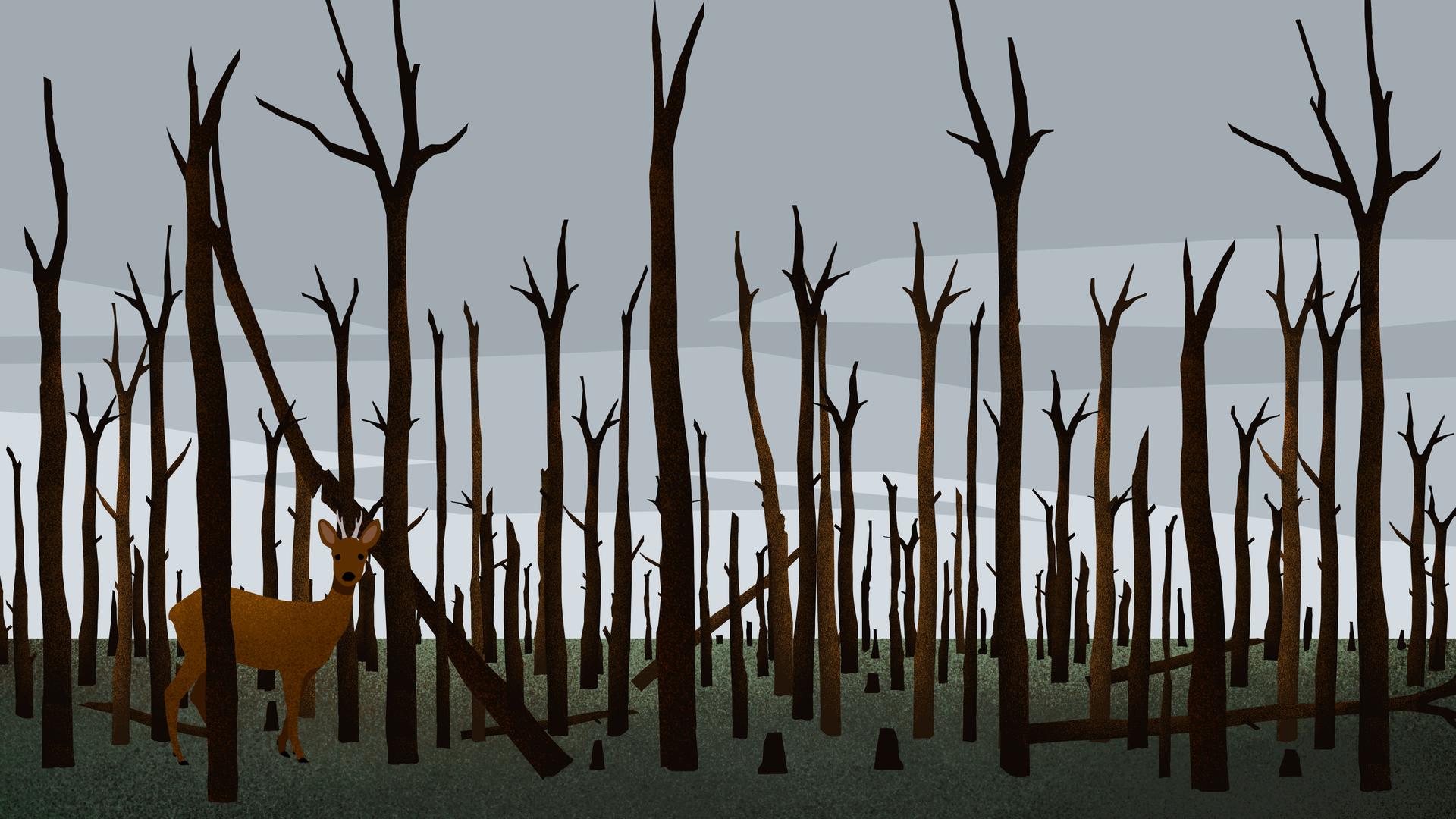This is how to tackle all three.
You’d be hard pushed to find a more visual reminder of humanity’s flagrant bullying of nature than the scenes flashed across television screens in recent weeks of the fires wreaking havoc on precious landscapes from the Amazon to California.
Driven mostly by land conversion for agriculture in the Southern Hemisphere and by persistent hotter and drier weather due to climate change in the Global North, intense wildfires have caused enormous damage to people, property, wildlife and economies, with some fearing they could even spark a US financial crisis.
What many don’t realise is that these same drivers are also having catastrophic impacts on other key areas of our planet, and our lives.
The latest edition of WWF’s biennial Living Planet Report (LPR) reveals that humanity’s increasing destruction of nature is not only helping to drive wildfires in places like the Amazon but is also having a catastrophic impact on wildlife populations and human health.
The LPR 2020 shows that due to factors including deforestation driven by unsustainable agriculture, global populations of wildlife species have, on average, declined in size by a staggering two-thirds (68 per cent) in less than half a century. That’s before you even take into account the wildlife that will have been devastated by fires over the past year – bearing in mind the Amazon alone contains one in ten known species on Earth and the Australian bushfires killed or displaced almost 3 billion animals – which will surely cause the numbers to skyrocket.
Our report also shows that environmental degradation – including the illegal and high-risk wildlife trade – are contributing to the emergence of zoonotic diseases such as Covid-19.
Our planet is truly flashing red warning signs of systems failure – which is made all the harder to bear by today’s news that the world has failed to meet any of the 2020 goals to halt plant and wildlife loss.
However, all hope is not lost: the LPR also includes never-before-seen modelling which shows it would be entirely possible to start to reverse the current trend of nature loss as early as 2030. This is highly encouraging – as we know that if we leave it later than this, rates of biodiversity loss seen since 1970 will continue between now and 2050, making us more vulnerable to future fires and disease epidemics and taking decades to reverse, resulting in a planet that cannot support current and future generations of people. This devastating decline won’t be sustainable and is already affecting human wellbeing and the economy.
The research makes clear that “bending the curve” of biodiversity loss before this critical year can be done – but only if the world immediately embraces bolder, more ambitious conservation efforts, and also makes transformational, far-reaching changes in the way we produce and consume food. This means making food production and trade less harmful to the environment and much more efficient, reducing waste, and favouring more sustainable diets everywhere – in short, a significant overhaul of our food system.
But food system changes can’t be driven by business and governments alone. In fact, the research shows that not only can the public have an impact by making changes to the way they consume food – for example, by reducing their meat intake if they can – the efforts of such consumers are vital if we are to have a hope of stopping nature’s decline, and all the more so by 2030.
From today, leaders will be meeting at the United Nations General Assembly to hold the first-ever UN Biodiversity Summit. This is an opportunity to shape the ambition for critical commitments the world will have the opportunity to make around the climate, biodiversity and the ocean taking place in 2021.
This year’s fires coupled with the global pandemic – and their inherent links to humanity’s destruction of nature – provide all the more reason for UNGA 2020 to be a milestone moment. World leaders, businesses and civil society must seize it to set the groundwork for a New Deal for Nature and People that puts nature on a path to recovery by 2030.
In doing so they’ll give us the best chance of tackling three of the biggest challenges of our time. For a safer future for all life on Earth, us included.
Supporters are invited to add their names to WWF’s petition which can be found at: panda.org/pandemics and help call on world leaders to put policy frameworks and action plans in place that implement a ‘One Health’ approach which ensures they are doing all they can to protect us from future pandemics.
*Wildlife populations monitored between 1970 and 2016
Author: Marco Lambertini
Marco Lambertini became Director General of WWF International in April 2014, to drive the achievement of the global conservation organization’s critical mission to save life on Earth.
Source










Discussion about this post